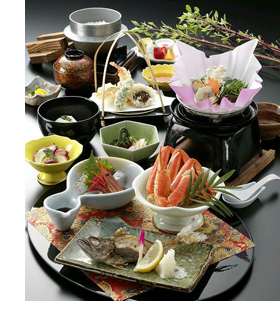
Two high-order qualities of compelling user experiences revolve around the principles of harmony and balance. People feel at ease experiencing these. Unfortunately, high-order principles aren’t discussed in the user experience domain extensively.
Reading this article by Jennifer Farley (Sitepoint) on balance as a design principle and finding this blogpost on Washoku cooking and design by Garr Reynolds (Presentation Zen) inspired me to learn more on how principles of Japanese cooking can improve my designs for experiences.
In Japanese cuisine, the Power of Five rules. Five principles outline the ideal components of every meal. Each principle is a list of five items which should all be present for a nutritionally, visually, spiritually balanced meal, with no single component overpowering the others.
- Harmony in color. Washoku meals include foods that are red, yellow, green, black and white. This is not only visually pleasing, but a great way to be sure you are getting a good nutritional balance with your meal.
- Harmony in palate. By having a balance of salty, sour, sweet, bitter, and spicy foods, a washoku-style meal is thoroughly satisfying to the entire palate.
- Harmony in cooking method. Washoku-style meals use several different methods of cooking in each meal: simmering, searing, steaming, raw, and sauteeing or frying.
- Harmony in the senses. Each meal should please the five senses: taste, sight, sound, smell and touch (texture).
- Harmony in the outlook. This is a philisophical idea that when eating we should attempt, first to respect the efforts of all those who contributed their toil to cultivating and preparing our food; second, to do good deeds worthy of receiving such nourishment; third, to come to the table without ire; fourth, to eat for spiritual as well as temporal well-being; and fifth, to be serious in our struggle to attain enlightenment.
Elisabeth Andoh (author of Washoku: Recipes from the Japanese Home Kitchen) says: “Selecting ingredients at their peak of seasonal flavor, choosing locally available foods from both the land and the sea, appealing to and engaging all the senses, using a collage of color, employing a variety of food preparations, and assembling an assortment of flavors – a Washoku approach to cooking gives the creative and contemplative cook an opportunity to satisfy his or her own aesthetic hunger while providing sustenance and sensory pleasure to others.”
I immediately ordered her book.


